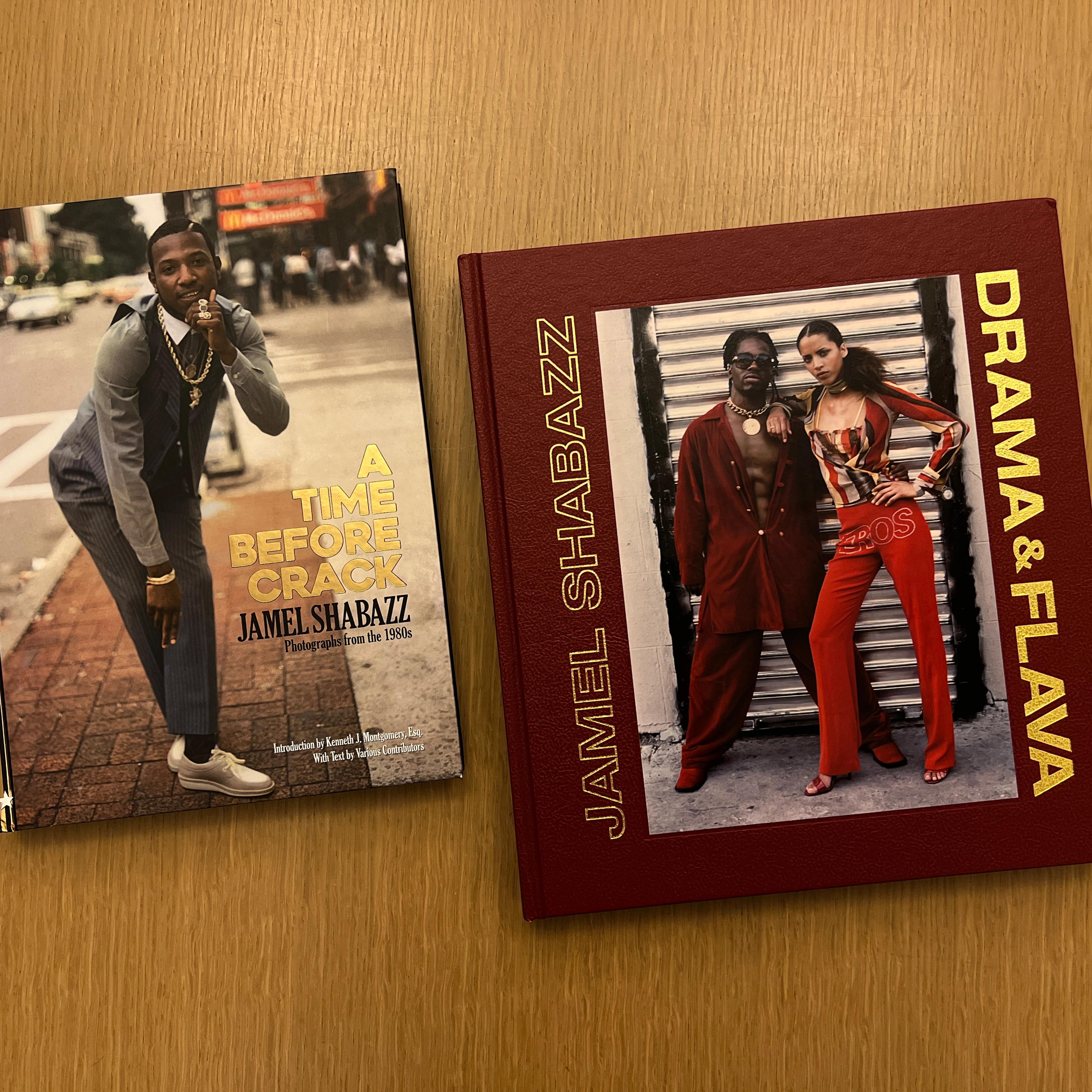Introduction
Colman Domingo, one of the co-chairs of The Met Gala this year, shared a quote from American playwright George C. Wolfe during the exhibition press preview, “God created Black people, and Black people created style.” The Costume Institute’s spring show, Superfine: Tailoring Black Style, is currently on view through October 26, 2025. This article highlights key library resources that informed and inspired our spring exhibition on Black style and dandyism. We invite you to engage with a curated selection of materials that enrich and expand upon the exhibition themes. Explore the many ways in which style has long served as a powerful form of self-expression, resistance, and cultural pride within Black communities.
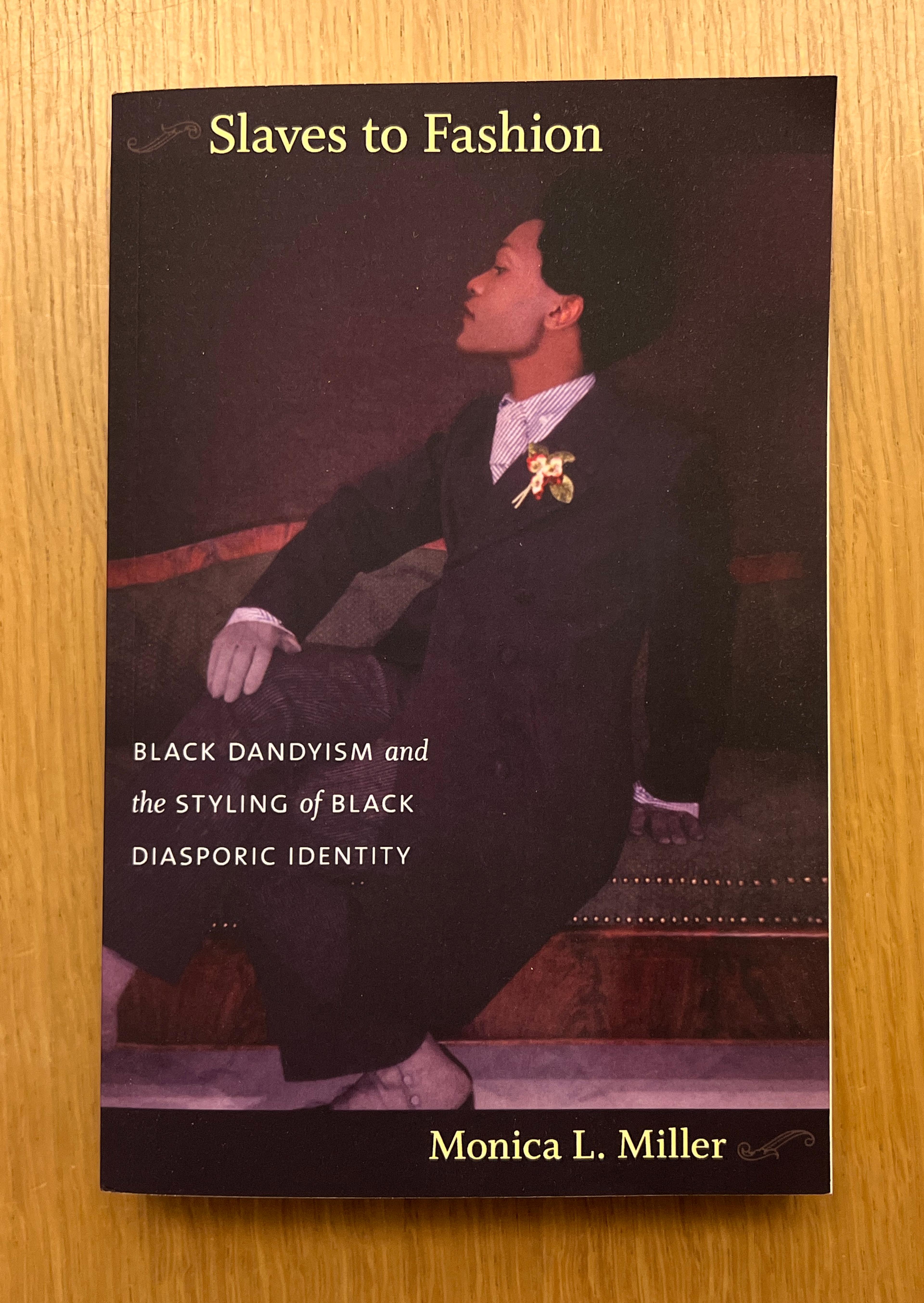
Monica L. Miller. Slaves to Fashion: Black Dandyism and the Styling of Black Diasporic Identity (2009)
Superfine: Exhibition background and research in context
For this exhibition, we had the privilege to collaborate with guest curator Dr. Monica L. Miller, Professor and Chair of Africana Studies at Barnard College, Columbia University, in adapting her 2009 book Slaves to Fashion: Black Dandyism and the Styling of Black Diasporic Identity into the three-dimensional world of Superfine: Tailoring Black Style. Like Slaves to Fashion, Superfine interrogates the complex intersections between Black identity and personal style. Presenting dandyism as both an aesthetic and a strategy, and using a wide array of historical and contemporary objects as case studies, the exhibition examines the ways in which Black people have used dress and fashion to transform their identities and imagine new ways of embodying political and social possibilities. Inspired by the structure of Zora Neale Hurston’s 1934 essay "Characteristics of Negro Expression," the exhibition travels through twelve representative themes and roughly three hundred years of Afro-diasporic history.
Black radiance: Portraits of identity and style
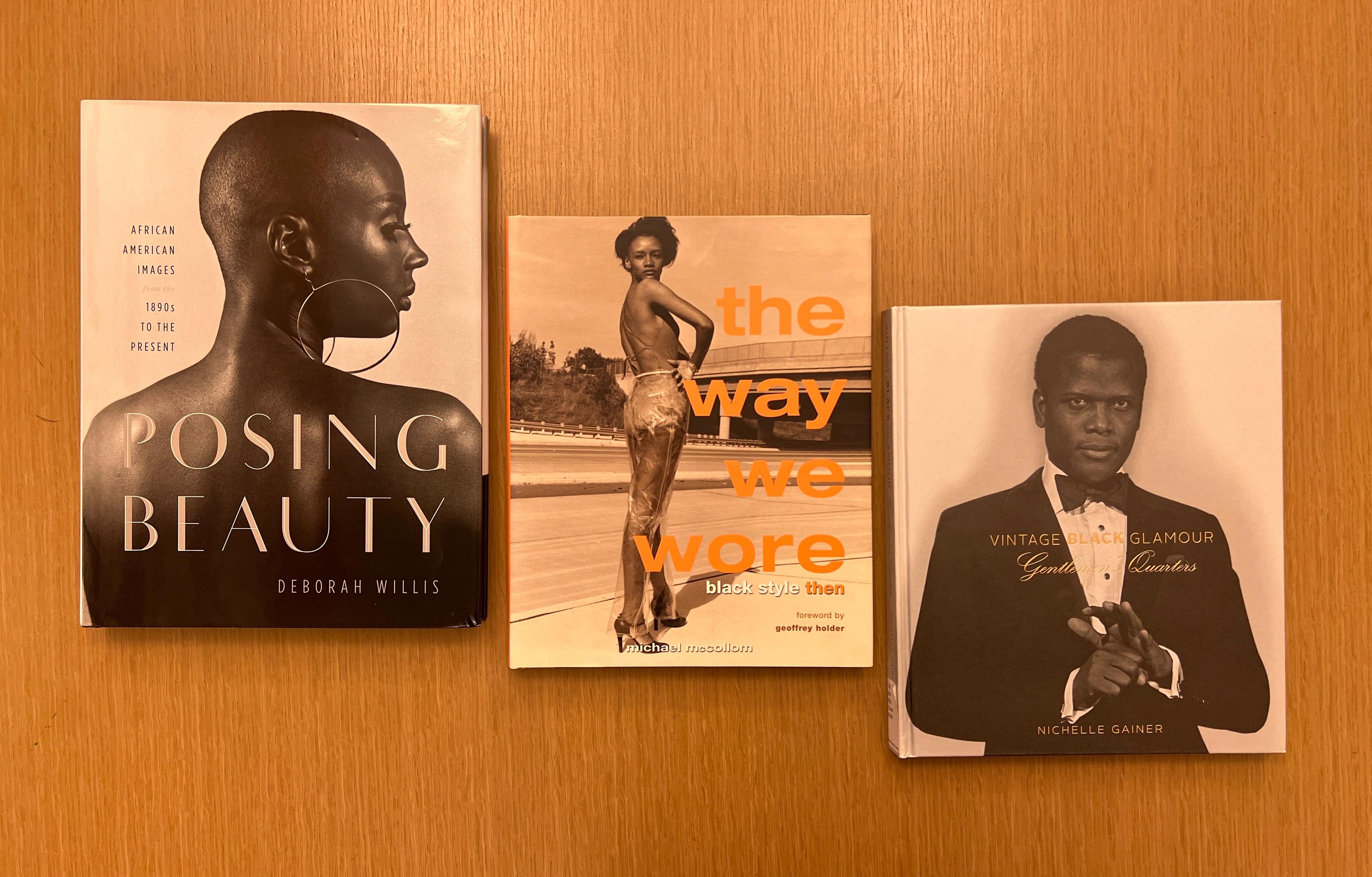
Left: Deborah Willis. Posing Beauty: African American Images from the 1890s to the Present (2009). Center: Michael McCollom. The Way We Wore: Black Style Then (2006). Right: Nichelle Gainer. Vintage Black Glamour: Gentleman’s quarters (2020)
The Costume Institute Library features a range of titles that highlight the incredible histories of Black people through the lens of fashion, stories that help restore and enrich a legacy too long overlooked. Posing Beauty: African American Images from the 1890s to the Present by Deborah Willis is an exploration of Black beauty and representation spanning over a century. Sparked by her realization as a student in the 1970s that images of Black beauty were largely missing from mainstream culture, Willis began a lifelong journey to recover and reframe that narrative. The book is divided into four main parts: constructing a pose; body and image; modeling beauty and beauty context; and a section of color plates. It features over two hundred photographs contributed by more than a hundred photographers, many of which were previously unpublished. The collection highlights iconic figures such as Josephine Baker, Billie Holiday, Angela Davis, and Muhammad Ali, as well as contemporary icons like Denzel Washington, Lil’ Kim, and Michelle Obama. Willis’s work sparks a conversation about how beauty is seen and shaped by both the subject and the photographer. It also highlights how images can represent empowerment and identity while reflecting shifts in art, culture, and politics over the past hundred years.
The Way We Wore: Black Style Then by Michael McCollom is a nostalgic tribute to Black fashion and self-expression from the 1940s to the present. McCollom invited a combination of insiders, outsiders, and everyday style icons to share their personal photos, including both their best and worst looks, noting that “style is so subjective—if you ask 100 people what style is, you’ll get 100 different points of view.” The resulting collection features over one hundred fifty photographs that capture iconic style moments: elegant brides, supermodels, dignified servicemen, Sunday churchgoers, fashion-forward youth, and everyday trendsetters. Spanning eras from the Harlem Renaissance to the golden age of hip-hop, the book traces the evolution of Black fashion through photo credits, quotes, or personal anecdotes. The result is a vibrant visual history that feels intimate, personal, and deeply human.
The three-volume Vintage Black Glamour series by Nichelle Gainer celebrates the legacy of Black performers, artists, and trailblazers from the twentieth and early twenty-first centuries. Initially launched as a blog in 2011, the series draws from historic, rarely seen photographic archives and private family collections to create thoughtfully curated, encyclopedic volumes that spotlight both world-renowned style icons and lesser-known yet influential talents. As Gainer notes, “Everyone is welcome, but this book is especially for the people of color who became self-styled detectives to learn about significant portions of Black history that were absent from the textbooks they studied in schools from generation to generation.”
Dandyism as style and rebellion
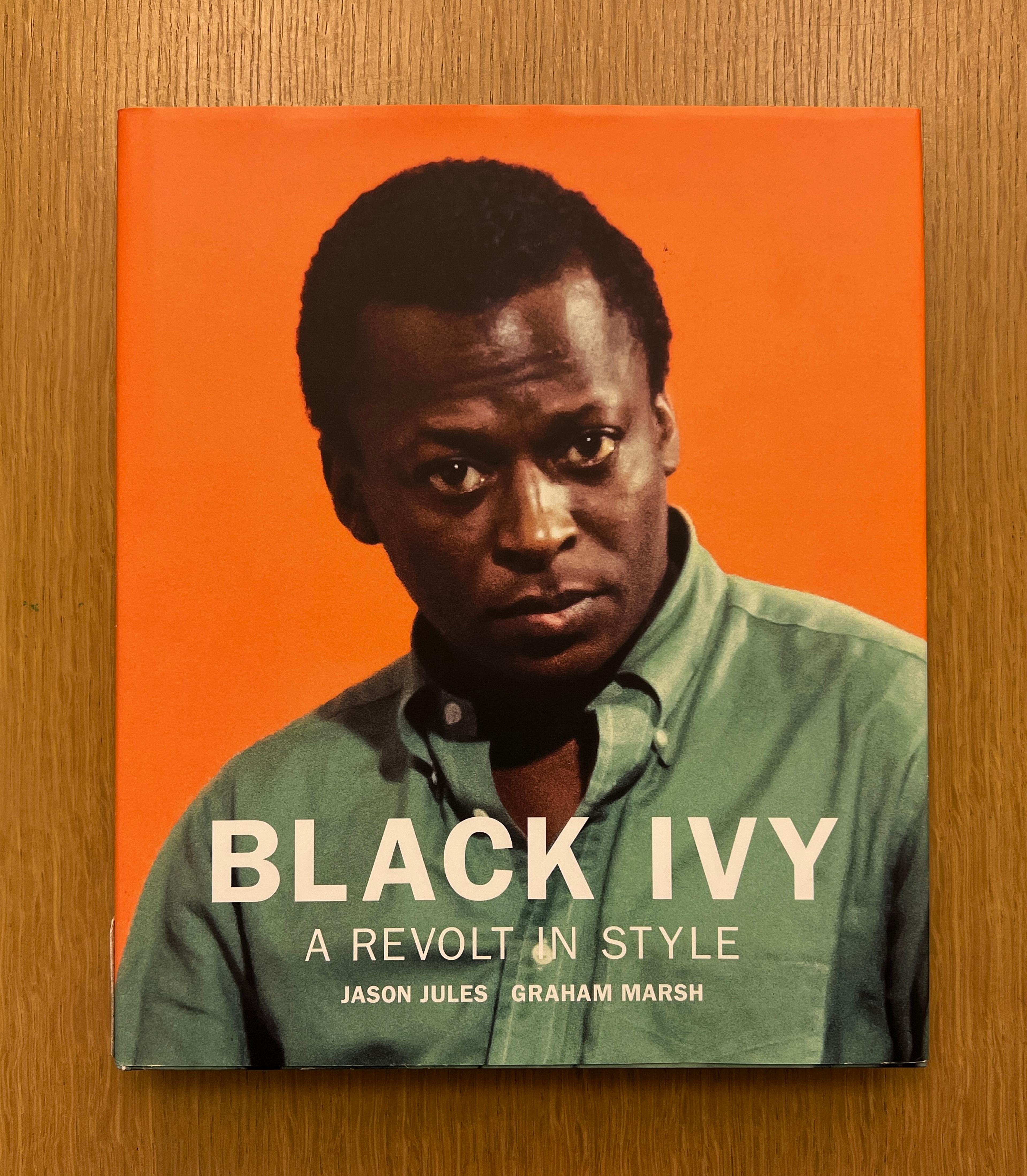
Jason Jules. Black Ivy: A Revolt in Style (2021)
Black Ivy: A Revolt in Style explores how Black culture redefined and subverted the Ivy League look during a pivotal era in American history. At a time when this style symbolized privilege and exclusivity, Black men across the country adopted and transformed it, infusing classic preppy fashion with an effortlessly cool, rebellious edge. The book illustrates how this generation used clothing as a tool for self-expression and quiet protest, challenging societal norms amid the broader struggle for civil rights.
Framing Black style: Street photography
Our collection features a range of books on documentary photography, which provides vivid perspectives on street style across eras, cultures, and locations. Jamel Shabazz’s work casts a powerful lens on the evolution of Black style, particularly the expression of dandyism within urban communities. Best known for documenting New York City in the 1980s and ’90s, Shabazz captures far more than fashion; his portraits tell beautiful stories that reflect identity, pride, and quiet resistance, illuminating the broader Black experience in America.
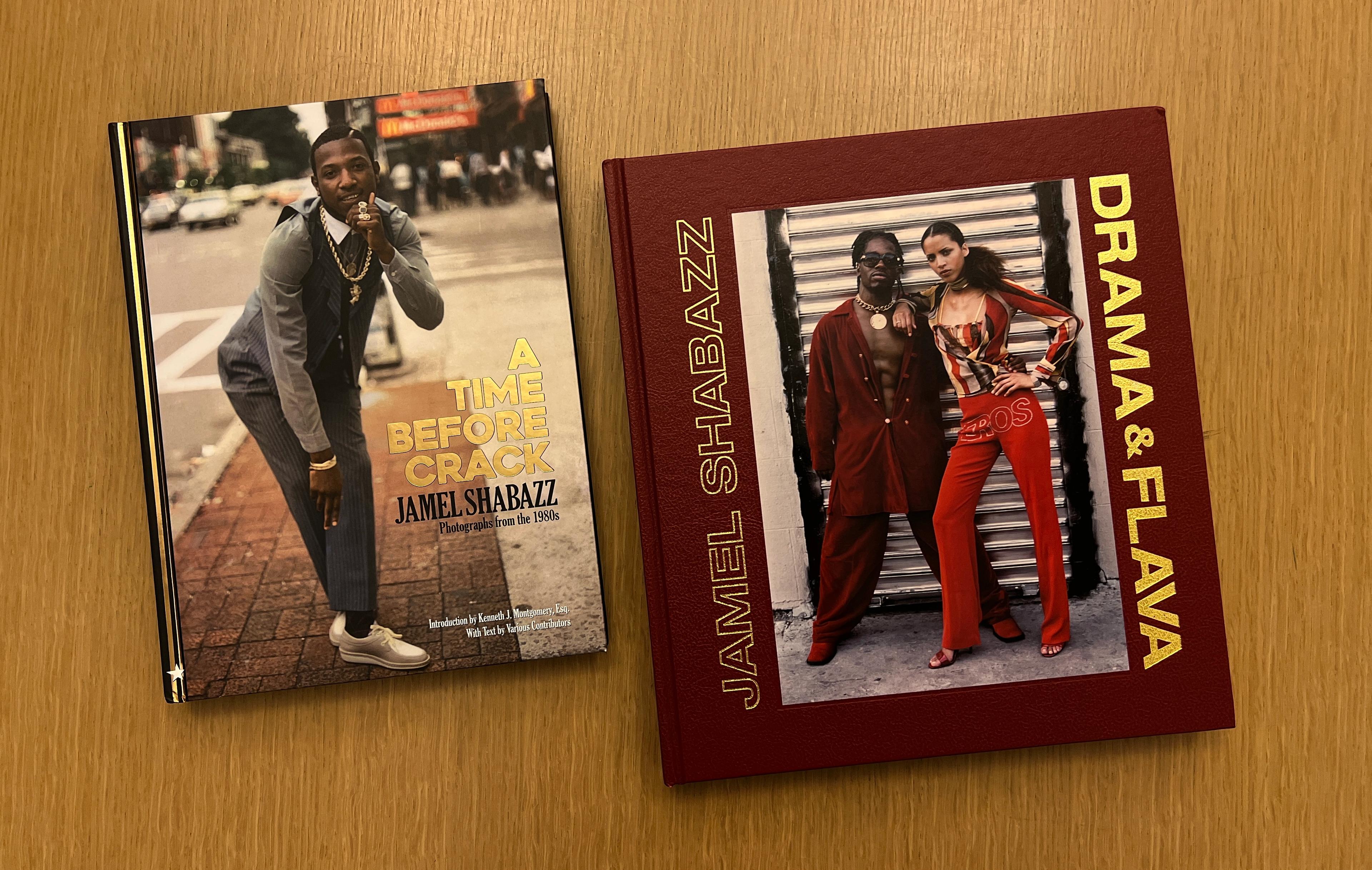
Left: Jamel Shabazz. A Time Before Crack: Photographs from the 1980s (2022). Right: Jamel Shabazz. Drama & Flava (2025)
Our holdings include many of Shabazz’s books, such as A Time Before Crack: Photographs from the 1980s, which, in his words, “serve as reminders of how life was in New York City before the crack epidemic. Those times were not perfect, but it was a period that gave many of us hope… and then came crack, and life would never be the same.” We also have his most recent book, Drama & Flava, a collection that explores the influence of urban fashion and its lasting impact on mainstream trends, from streetwear to high fashion, underscoring the value of authenticity, self-expression, and cultural depth in style.
A legend in focus: André Leon Talley
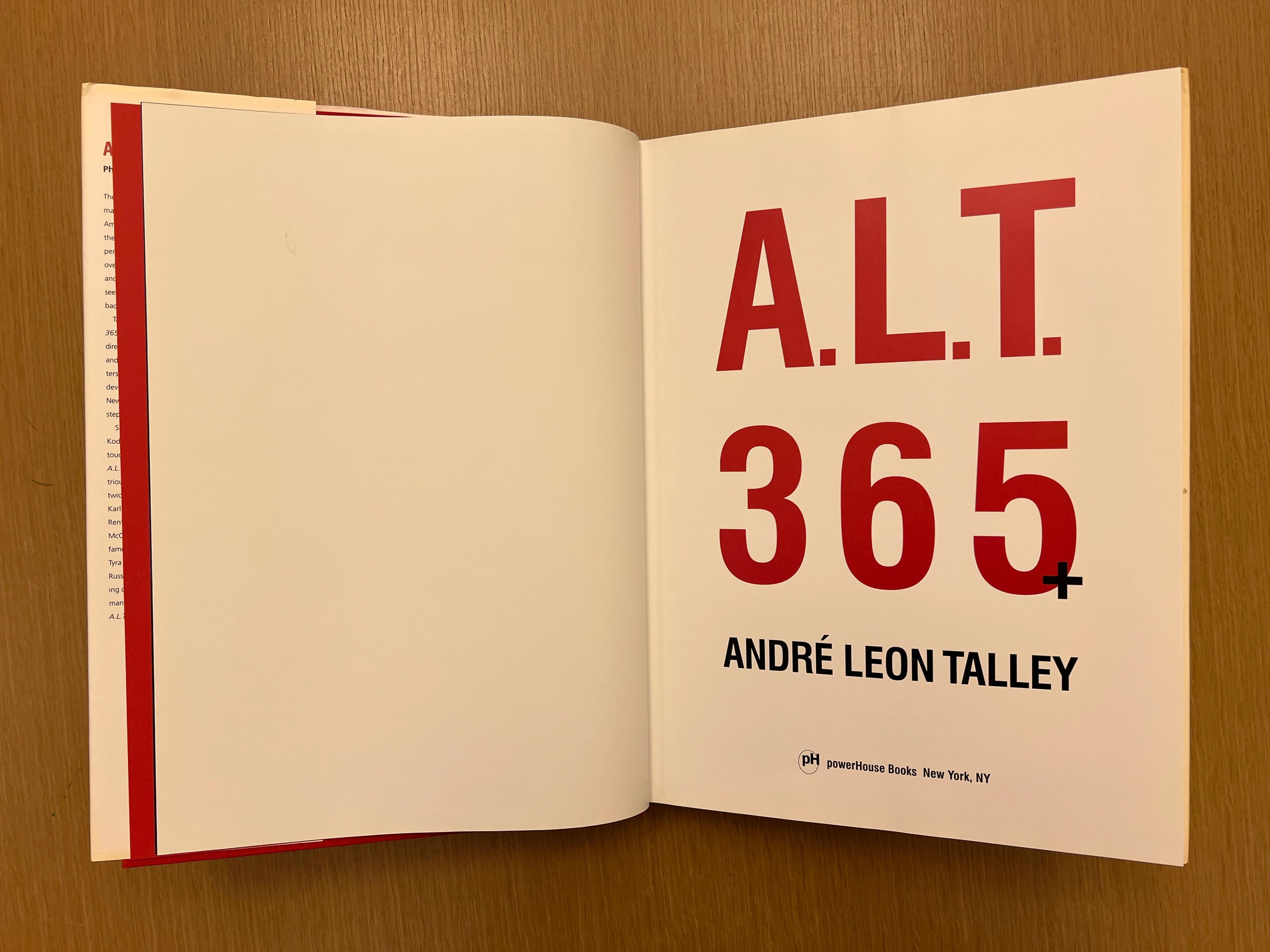
André Leon Talley. A.L.T. 365+ (2005)
One of the prominent fashion icons featured in Superfine is the late and unforgettable André Leon Talley, the legendary former Vogue editor-at-large who redefined elegance, intellect, and influence in the world of high fashion. Talley, who penned the beloved Vogue column “Life with André,” offered readers a unique lens on style and culture. In his book A.L.T. 365+, Talley invites readers into a year of his life through a mix of candid photographs, essays, and reflections. From front-row moments at Paris Fashion Week to Sunday services at Abyssinian Baptist Church in Harlem, the book captures the full spectrum of his glamorous and profoundly multifaceted world. Shot entirely with a disposable Kodak camera, it features a dazzling cast of cultural icons, designers, models, and musicians. More than just a fashion diary, it stands as a celebration of Talley’s unmatched personality, power, and presence as a tastemaker and cultural force. As Talley himself said, “Style transcends race, class, and time.”
On display and on the shelves: Spotlight on Black designers
Superfine features the work of roughly fifty designers who have contributed to and been inspired by the long history covered in the exhibition. In each of the twelve exhibition groupings, contemporary and historical garments are juxtaposed, facilitating cross-temporal discourse and highlighting explicit and implicit connections to the themes and historical narratives present within each section. From self-published zines to photography catalogs and lookbooks, many of the designers included in Superfine, such as Harlem’s own Dapper Dan, the late Virgil Abloh of Louis Vuitton, Grace Wales Bonner, and Martine Rose, are well-represented in the varied holdings of The Costume Institute Library.
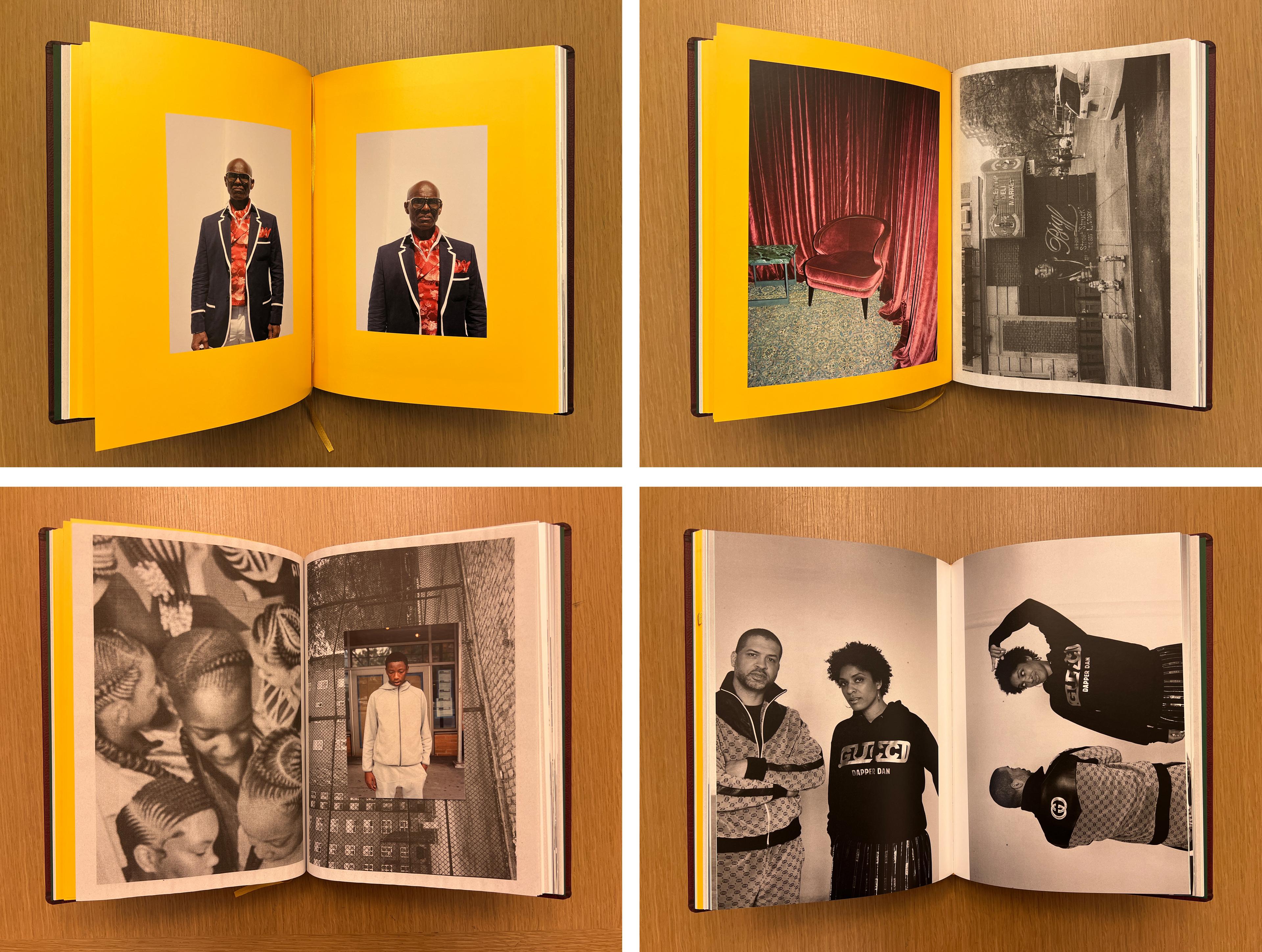
Ari Marcopoulos. Dapper Dan’s Harlem. ([2019])
A stunning tribute to legendary designer Dapper Dan and the Harlem neighborhood where his iconic atelier was born, Dapper Dan’s Harlem documents one of the most important figures and narratives in Black fashion history. Captured by filmmaker and photographer Ari Marcopoulos in the summer of 2018, this rare collector’s edition was published by Gucci in a limited run of just five hundred copies. The beautifully crafted, leather-bound volume features gilt lettering, an inset photo plate of Dapper Dan on the cover, and a gold silk-ribbon bookmark.
The first section features black-and-white landscape photographs printed on delicate scritta bible paper, interspersed with tipped-in 4 x 6 color prints of Harlem locals and full-sized color images that offer intimate glimpses of Dapper Dan and his iconic atelier. The second half presents a series of black-and-white portraits of his extended family, famous friends, fellow creatives, and the vibrant Harlem community that helped shape his work and his legacy. Personal introductions and anecdotes from the subjects themselves provide heartfelt insights into their relationships with the designer and his lasting influence. As one reflection notes, “Everyone in Harlem knows Dapper Dan. As we take a half hour to stroll three short blocks from his atelier to the local coffee shop, it feels like everyone within a mile stops to smile, shake hands, and chat. And Dap, as everyone knows him, has time for them all.”
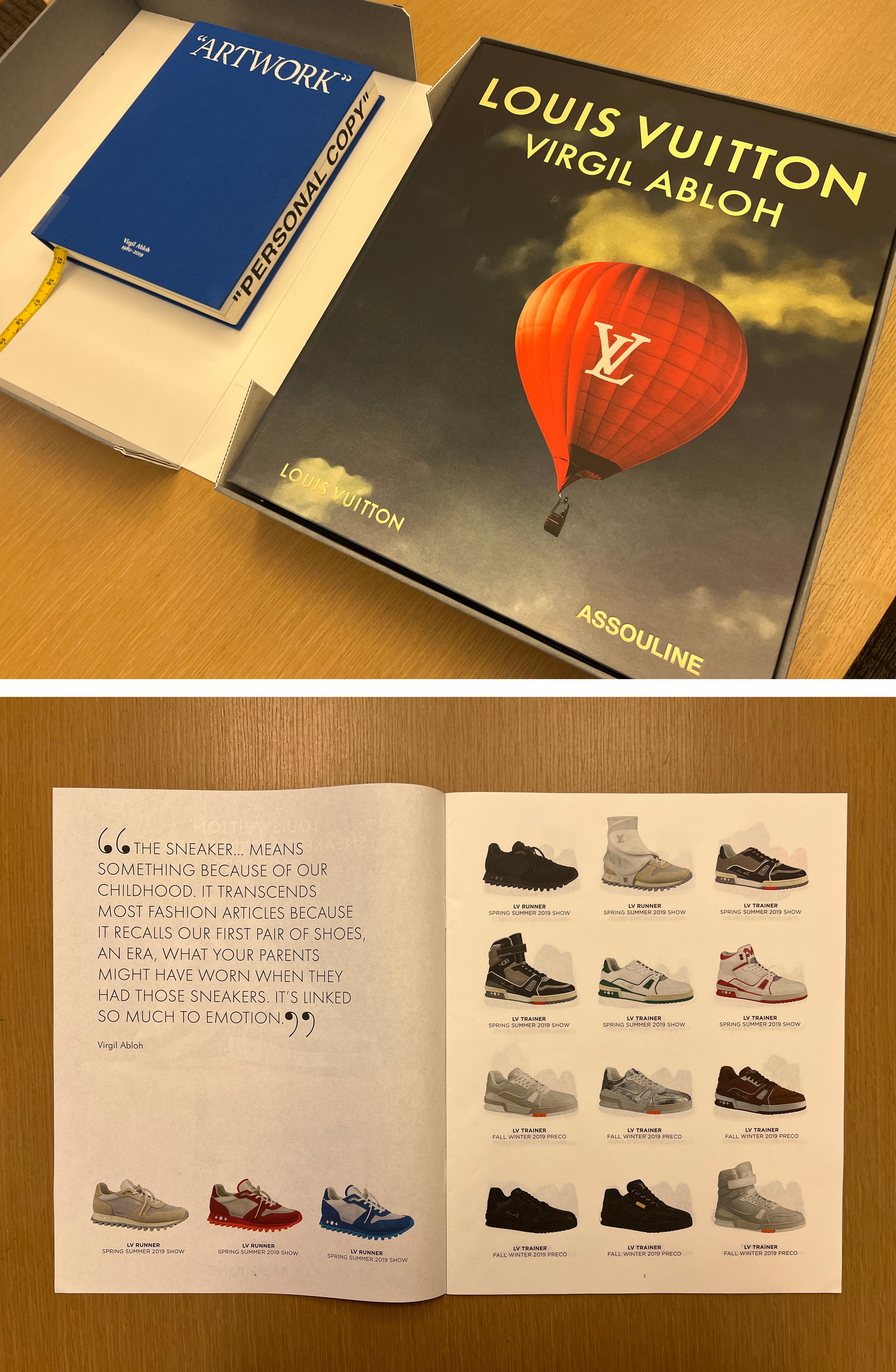
Top: Virgil Abloh: "Figures of Speech" (2019). Bottom: Anders Christian Madsen. Louis Vuitton: Virgil Abloh (2022)
The late Virgil Abloh was more than a fashion designer; he was a visionary who reshaped the cultural landscape of fashion, art, music, and design. In 2018, Time magazine named him one of the hundred most influential people in the world. As the founder of Off-White in 2012, he broke down the barriers between streetwear and high fashion, challenging traditional hierarchies with a fresh, disruptive perspective. Abloh’s creativity knew no bounds, and his work consistently pushed the limits of what fashion could express. This expansive vision is at the heart of Virgil Abloh: “Figures of Speech,” edited by Michael Darling, the exhibition catalog for his first major retrospective, organized by the Museum of Contemporary Art Chicago in 2019. The show—which also traveled to the High Museum of Art; the Institute of Contemporary Art, Boston; and the Brooklyn Museum—showcases his multidisciplinary practice, spanning fashion, furniture, graphic design, architecture, and more. The five-hundred-page volume presents a series of essays and large-scale, full-color images that examine and showcase Abloh's work along with an impressive archive of personal research images accompanied by his own commentary.
Abloh also made fashion history as the first Black artistic director of Louis Vuitton menswear, a role he held from 2018 until his passing in 2021. Louis Vuitton: Virgil Abloh offers a stunning tribute to his work at the iconic fashion house. The library owns two editions of this work. The “ultimate edition” is a large-format book that features over two hundred fifty photographs and personal reflections from Abloh's inner circle of friends, offering a behind-the-scenes look at his creative process. This edition is accompanied by a supplementary zine featuring a glossary of his iconic sneaker collaborations. Together, these publications celebrate a legacy that defines Abloh's fearless innovation, cultural dialogue, and unwavering commitment to empowering the next generation of designers and wearers.
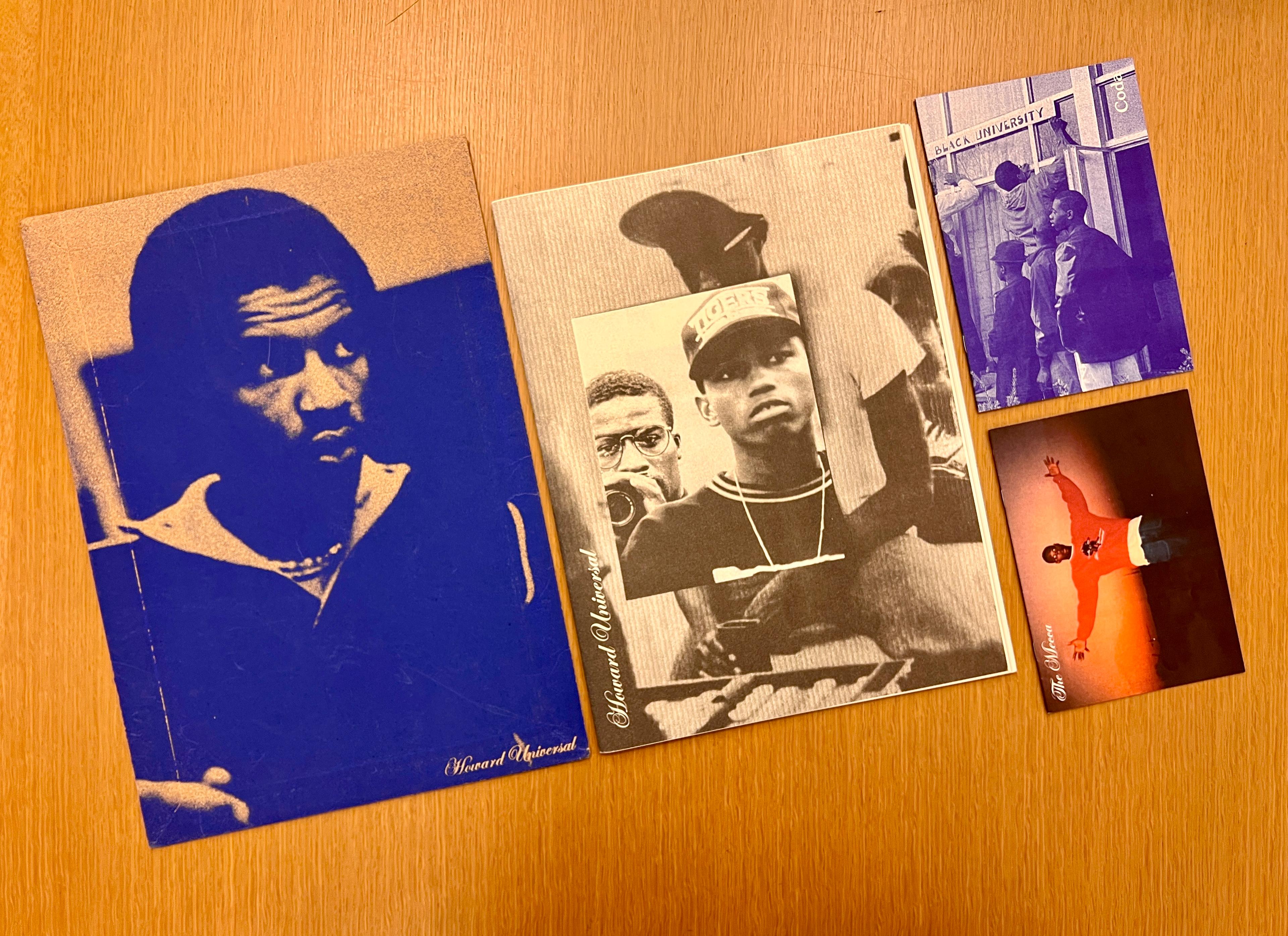
Grace Wales Bonner. Howard Universal. ([2025])
Grace Wales Bonner is an award-winning designer of Jamaican and English heritage who, since launching her eponymous label in 2014, has gained international acclaim for collections that blend precise tailoring with Afro-centric aesthetics, spiritual symbolism, and references to Black literature, music, and art. Through collaborations with brands like Adidas, exhibitions at institutions such as the Museum of Modern Art and the Serpentine Gallery, and in particular, a growing body of specialty printed matter, Wales Bonner continues to push the boundaries of fashion as a form of storytelling and cultural expression.
One standout example from The Costume Institute Library’s collection is Howard Universal, a special-edition publication designed by Pablo Jomaron. Created as part of Grace Wales Bonner’s Between Critique and Hope research project, the zine pays tribute to the legacy of Howard University. Originally distributed for free at institutions such as Howard University in Washington, D.C., the Schomburg Center for Research in Black Culture in New York, For Keeps Books in Atlanta, and Stuart Hall Library in London, the main publication features archival yearbook images from 1947 to 2000 as well as new campus photographs by photographer D’Andre Williams, contributions from artist Laraaji, cinematographer Bradford Young, and stylist Marcus Paul, as well as quotes from the late Toni Morrison. This group includes two smaller booklets: The Mecca, a lookbook featuring students wearing pieces from the Wales Bonner Fall-Winter 2024 collection, and Coda, which provides historical context and archival sources. Together, these elements create an intergenerational portrait of Howard University that not only celebrates its cultural and social impact but also educates readers about the significance of historically Black colleges and universities.
Lookbooks as fashion memory
A popular and frequently used part of our library is our extensive archive of fashion lookbooks and catalogs. Initially created as sales and marketing tools, these rare reference materials document and promote designers’ seasonal collections, offering a unique glimpse into the evolution of fashion branding and presentation from a fashion-research perspective. Formats vary widely, from straightforward compilations of runway photos to highly produced, editorial-style publications.
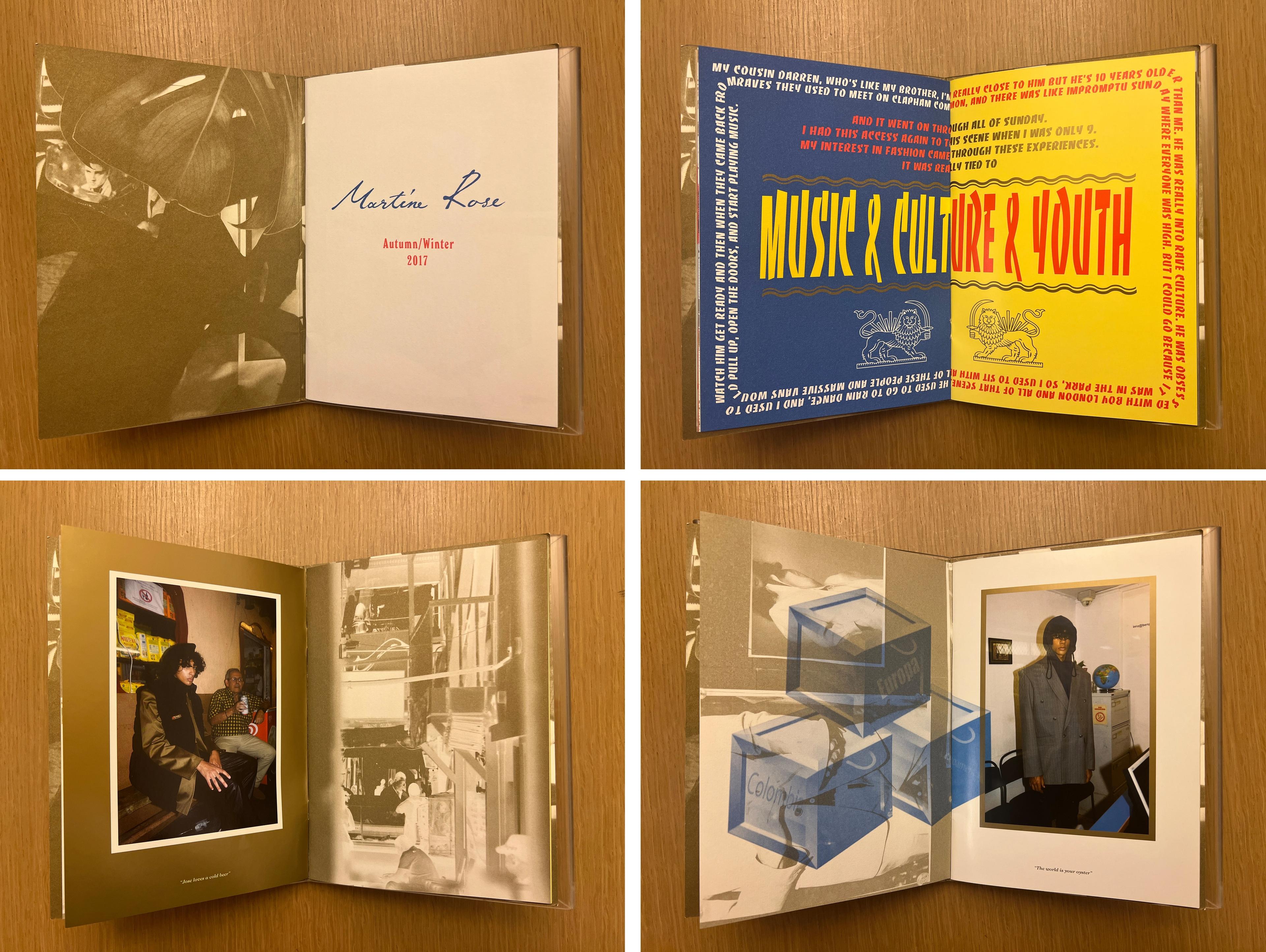
Martine Rose Autumn/Winter 2017 collection lookbook
A rare gem in our collection is the lookbook from Martine Rose’s Autumn/Winter 2017 collection. Rose, a British-Jamaican menswear designer who launched her brand in 2007, is celebrated for her unconventional approach to design and runway presentation, drawing deeply from her heritage, her connection to music, and the high/low cultural mix of the London streets where she grew up. For this particular show, she staged the runway presentation at the bustling Seven Sisters Market in North London. The models walked through the indoor food market, blurring the line between everyday life and high fashion. In this collection, Rose subverted traditional male archetypes, drawing inspiration from bankers, bus drivers, investors, and office workers, and cleverly reimaged their uniforms with subtle, unexpected feminine touches. The lookbook itself, entitled Don Pedro, is a small, graphic design–heavy booklet designed and published by Machine-A and Ditto, featuring editorial-style photography by Britt Lloyd, with a fabric clothing label bound into the pages at the end. More than just a promotional tool, it is a striking artifact from a memorable, boundary-pushing collection and runway presentation, interwoven with personal anecdotes from the designer that reveal her inspirations.
Periodicals: Capturing fashion in real time
The Costume Institute Library holds nearly four hundred periodical titles, including several that spotlight Black style and culture. Our collection comprises both original print magazines and digitized electronic issues, as well as books that offer historical overviews of notable publications. An issue of Jet magazine featuring Walt Frazier on the cover is on view in Superfine, and our library holdings include a scattered run of Jet issues from the 1960s through the 1980s. We also collect other mainstream titles such as Essence, the Women’s Magazine Archive, and Ebony as well as other topical publications and magazine supplements that capture key cultural moments of Black style.
One very rare magazine in our library collection is the 1972 issue of L’Uomo Vogue, an Italian men’s fashion magazine founded in 1968. The front cover features the theme, translated as: "A special issue made in New York. What is the true face of the Negroes of America?” The issue was entirely shot in New York City and features an all-Black cast of models, creatives, and cultural figures. Most of the models are men, with the exception of Pat Cleveland, and are dressed in bold looks by designers such as Fiorucci, Paradise Garage, and Valentino. The issue features interviews with style legends Stephen Burrows, James Baldwin, and Miles Davis, as well as street-style spreads, profiles of Black athletes, stylists, photographers, Parsons students, assistants from Glamour magazine, intellectuals, artists, politicians, and actors, all of whom have a space in its pages. In the back of the magazine is a full English translation, making this magazine accessible to a broader audience.
Conclusion
All of the books and resources discussed here offer just a small glimpse into the wealth of materials available in The Costume Institute Library's collection on Black fashion and style. To explore our holdings further, do a keyword search for “Superfine” in Watsonline, or you can view the digitized exhibition checklist (PDF) and the suggested catalog reading list (PDF). Materials from our fashion library collection can be requested and viewed in the Thomas J. Watson Library. Please check out our website for additional information about The Costume Institute’s Irene Lewisohn Costume Reference Library, archives, and special collections. For more updates on new acquisitions and examples of our fashion library collection, please follow us on Instagram at @costumeinstitutelibrary and @metcostumeinstitute.
